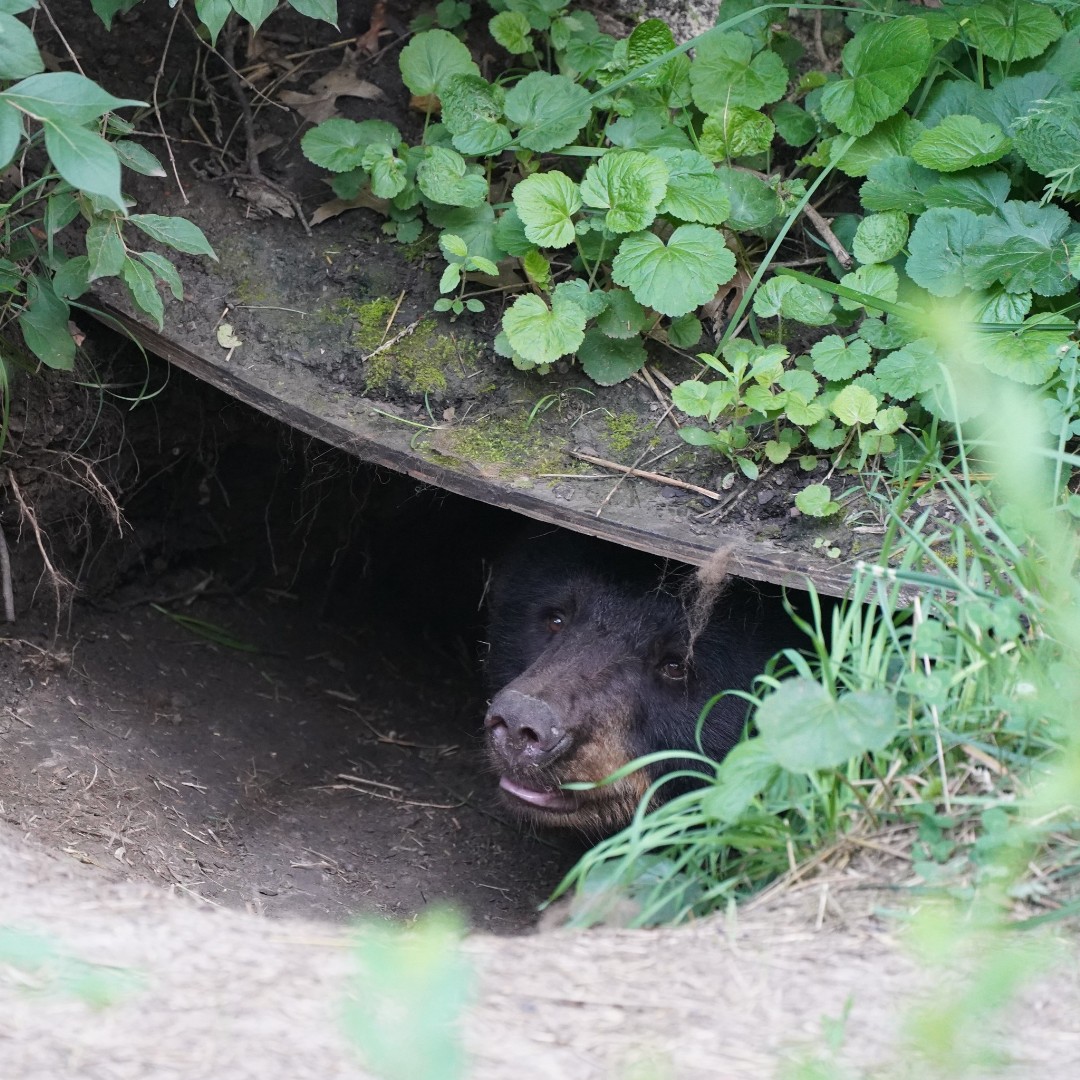- The significance of Happy World Bear Day and its role in raising awareness about bear conservation.
- The biology of bears, focusing on the North American Black Bear and the process of torpor.
- The zoo’s efforts to care for and manage bears, particularly through the example of Val, the Black Bear.
- The importance of habitat conservation and the challenges facing bear populations today.
- Community involvement and initiatives like Evergy’s Green Team in supporting zoo projects and wildlife conservation.
Happy World Bear Day offers a moment to reflect on the vital role bears play in ecosystems, and the concerted efforts needed to conserve them. Celebrated globally, this day sparks awareness and emphasizes the importance of protecting various bear species and their habitats. As humans encroach on natural habitats and climate change alters ecosystems, the survival of bears becomes increasingly precarious. Initiatives like Happy World Bear Day strive to educate the public, promote conservation efforts, and foster a deeper understanding of these magnificent creatures.
Understanding the biology of bears is crucial in appreciating their ecological significance and the complexities involved in their conservation. The North American Black Bear, Ursus americanus, serves as an excellent example. These bears exhibit a fascinating physiological process known as torpor. Val, a black bear residing in a zoo, demonstrates this adaptation perfectly. During the colder months, Val enters her den, significantly reducing her metabolic rate to conserve energy. Unlike true hibernation, torpor allows bears to wake easily if disturbed or food becomes available.
Val’s behavior offers insights into how black bears interact with their surroundings and adapt to environmental changes. Observations reveal that Val typically enters torpor in early October and reemerges in spring, around March or April. However, climate fluctuations have led to variations, with some bears extending their denning period. Such changes underline the need for detailed study and monitoring to understand how external factors influence bear behavior and survival.
Zoo management plays a critical role in caring for these majestic animals. Facilities prioritize creating environments that mimic natural habitats, providing mental and physical enrichment for their residents. Val’s home, Black Bear Woods, exemplifies this commitment. Sponsored by supporters like Hill’s Pet Nutrition, the habitat features structures crafted to encourage climbing and exploration, essential behaviors for black bears. These environments are crucial for maintaining the health and well-being of captive bears, offering them a sanctuary that caters to their instincts and needs.
Conservation efforts in zoos extend beyond day-to-day care. They engage in breeding programs, research, and partnerships that contribute to the broader goal of wildlife preservation. One notable initiative is the collaboration with Evergy’s Green Team, which constructs sustainable structures for zoo habitats. Utilizing recycled telephone poles, they provide climbing structures that support bear enrichment while highlighting responsible resource use.
The broader focus on habitat conservation is pivotal for bear survival. Deforestation, climate change, and human encroachment threaten bear populations worldwide. By protecting natural environments, we ensure not only the survival of bears but also the myriad other species dependent on these ecosystems. Conservation organizations work tirelessly to establish protected areas and promote sustainable practices that mitigate these threats.
Community involvement is a cornerstone of successful conservation efforts. Public engagement through educational programs and volunteering fosters a sense of responsibility and connection to wildlife. Initiatives like Happy World Bear Day serve as platforms to involve people globally, encouraging them to support policies and practices that protect bears and their habitats. These efforts are complemented by grassroots movements, where individuals and local groups make tangible impacts through awareness campaigns and advocacy.
In conclusion, Happy World Bear Day reminds us of our collective responsibility to protect and conserve bear species. It underscores the importance of understanding bear biology, supporting zoo management efforts, and advocating for habitat preservation. By fostering a deeper connection to these animals, we can ensure a future where bears continue to thrive in the wild. It calls for a unified effort from governments, organizations, and individuals to safeguard the existence of these remarkable creatures.
*****
Source Description
Happy World Bear Day! 🐻
“Does the Zoo even have a bear?” -(many) guests during winter & spring break.
Yes, yes we do! Val, the North American Black Bear, is currently in her winter’s den for a metabolic process known as torpor. Torpor is when an animal’s activity rate slows drastically down so they can conserve energy over a period of time where food & resources are limited.
Val typically begins spending more time in her den in October and emerged in March/April in previous years. Recently it has been noted by our Carnivore team that Val has been spending longer periods of torpor in her den – last year she went down in the den in early October and was not regularly out & about in her yard until early May. It is unknown what fully goes into Val’s decision process on when to emerge, but assumptions are that it has to do with consistency of mild weather.
If you look closely in the yard at Black Bear Woods (sponsored by @hillspet ) you may see the entrance to Val’s den if you’re viewing down from the boardwalk!
🐻Post your guesses in the comments section on when you think Val will completely emerge from her den!🐻
(P.S. as always THANK YOU to Evergy’s Green Team for building Val’s climber, made with recycled telephone poles!)


